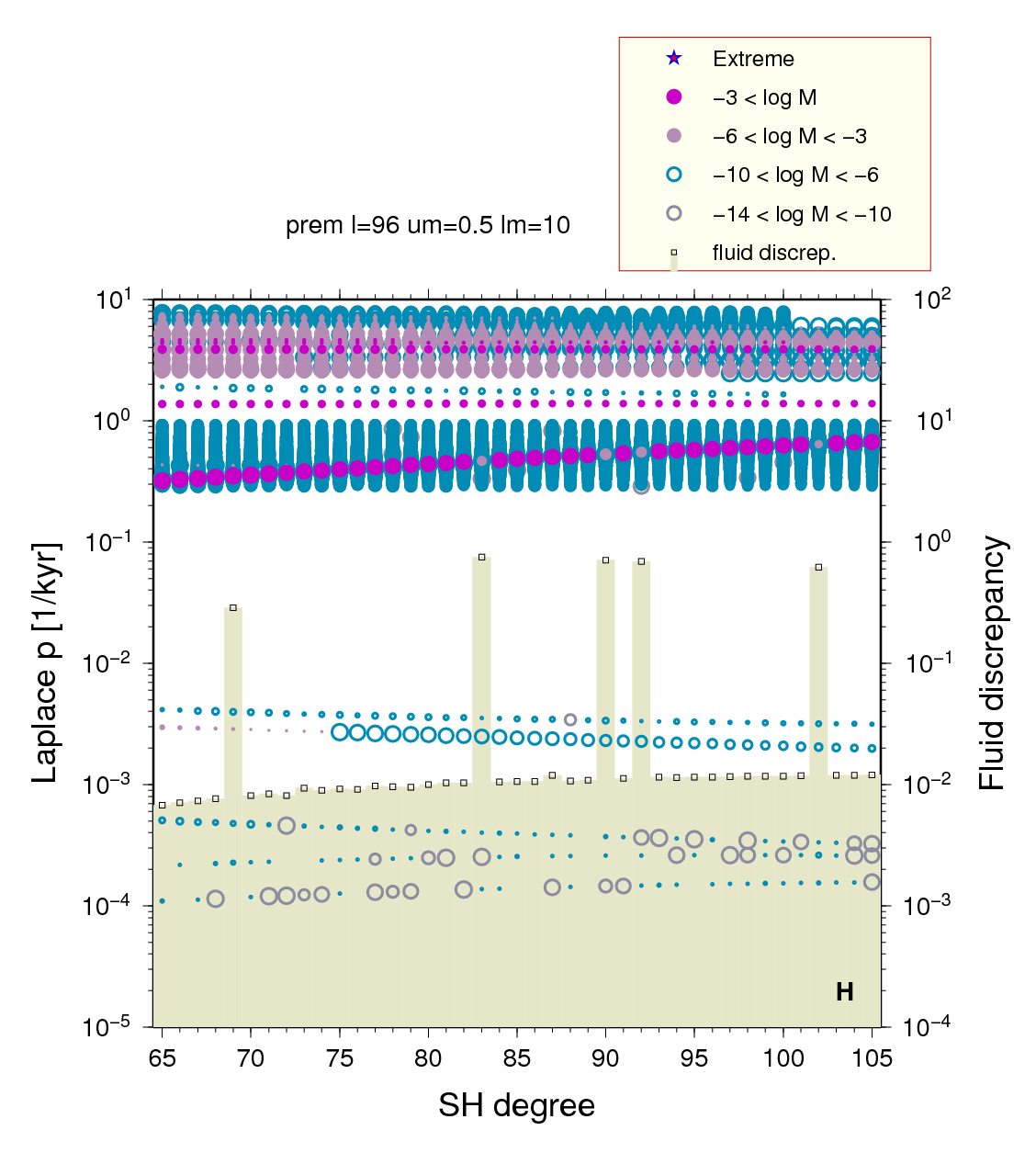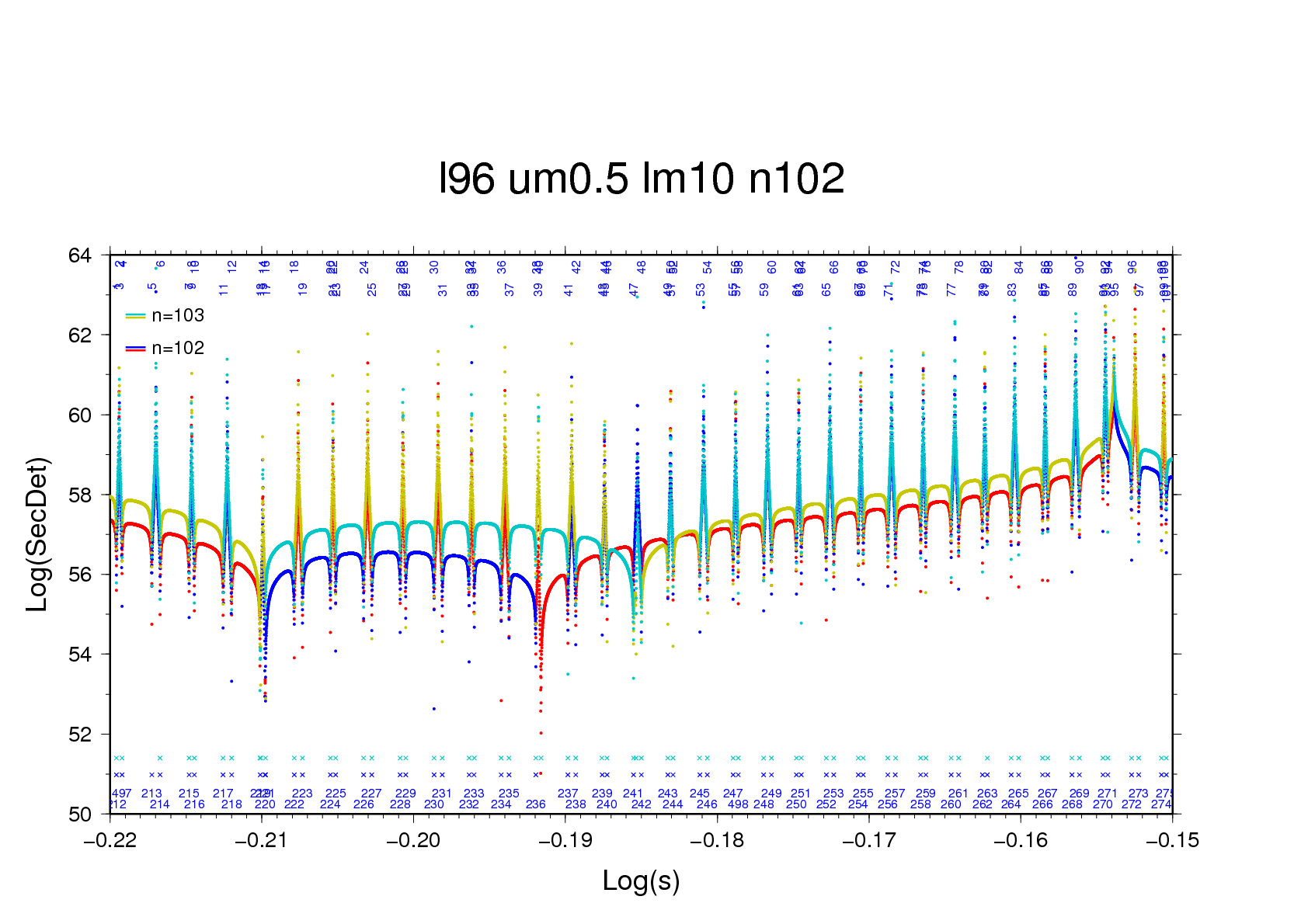Figure 1 - Five root-finding
problems. In the set with n=102 a root is missing
near s=0.65 (log s ~ -0.19) (Laplace p = s,
sorry!) Also note the irregularities in the low-s
modes, probably a numeric precision problem. The big fluid
discrepancy in the set n=69 has a different reason
altogether. Click on graphics to get full-scale image.
|
Figure 2 - The secular determinant in a
narrow range 0.603 < s < 0.708. Notice that
the problem of a near-zero (i.e. two red-coloured dip flanks
at -0.192) does not exist at n=103. Click on
graphics to get full-scale image. |

